Your cart is currently empty!
Blog
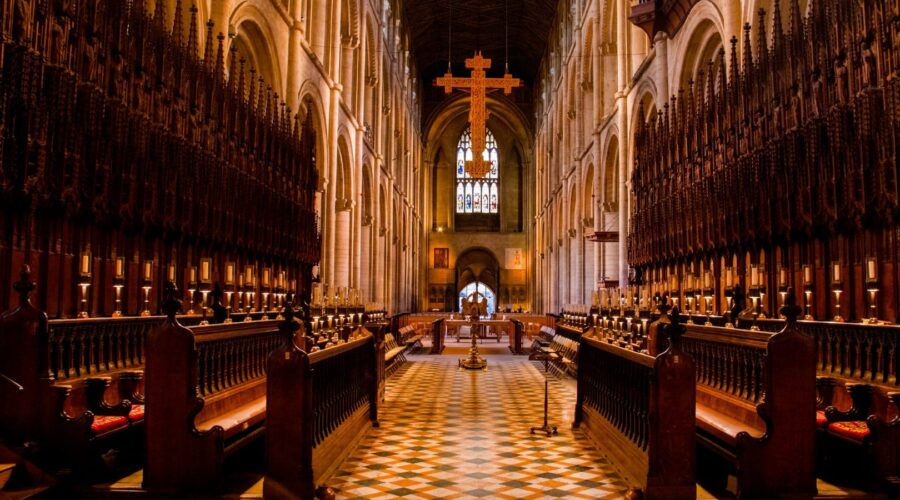
Unveiling the Hierarchy of the Catholic Church: A Comprehensive Guide
Introduction
The Catholic Church, a global institution with a rich history and vast influence, is governed by a well-defined hierarchy that plays a crucial role in its organization and administration. This hierarchy reflects the Church’s belief in the apostolic succession, tracing its origins to the apostles chosen by Jesus Christ. Understanding the structure and functions of the Catholic Church hierarchy is essential for comprehending the Church’s governance, decision-making, and spiritual leadership.
Papacy: The Supreme Authority
The Pope: A Successor of St. Peter
The pinnacle of the Catholic Church hierarchy is the Pope, who serves as the Bishop of Rome and is regarded as the successor of St. Peter, the apostle upon whom Jesus declared he would build his Church (Matthew 16:18). The Pope holds supreme authority in matters of faith, morals, and Church governance.
Election of the Pope
When the reigning Pope passes away or resigns, a conclave of Cardinals, known as the College of Cardinals, gathers in the Sistine Chapel to elect a new Pope by secret ballot. The elected Pope must receive a two-thirds majority vote and must be a male Catholic Bishop.
Functions of the Pope
- Presiding over the Universal Church
- Defining and safeguarding Catholic doctrine
- Leading the Church’s missionary and evangelizing efforts
- Canonizing saints and beatifying candidates for sainthood
- Appointing bishops, archbishops, and other high-ranking clergy
Bishops: Shepherds of the Dioceses
Bishops are ordained ministers responsible for leading and overseeing individual dioceses, which are geographic territories within the Catholic Church. They are appointed by the Pope and possess apostolic authority, meaning they trace their lineage back to the apostles.
Functions of Bishops
- Governing their dioceses
- Teaching and interpreting Catholic doctrine
- Ordaining priests and deacons
- Consecrating churches and other sacred spaces
- Providing pastoral care to the faithful
Priests: Ministers of the Sacraments
Priests are ordained ministers who assist bishops in the administration of the sacraments, the rites and rituals of the Church. They are ordained through the sacrament of Holy Orders, which grants them the ability to celebrate Mass, forgive sins, and administer other sacraments.
Functions of Priests
- Leading worship and celebrating Mass
- Preaching the Gospel and teaching the faith
- Administering the sacraments
- Providing spiritual guidance and counseling
- Visiting the sick and offering comfort to the dying
Deacons: Servants of the Church
Deacons are ordained ministers who serve the Church in various capacities. They assist priests and bishops in liturgical ceremonies, proclaim the Gospel, and perform works of charity and service.
Functions of Deacons
- Assisting at Mass and other liturgical celebrations
- Proclaiming the Gospel and preaching
- Distributing Holy Communion
- Baptizing and marrying
- Providing assistance in charitable and social ministries
Lay Ministry: Participation of the Faithful
In addition to ordained clergy, the Catholic Church recognizes the importance of lay ministry, allowing baptized Catholics to participate actively in the life and mission of the Church. Lay ministers serve in various roles, such as:
- Catechists
- Lectors
- Acolytes
- Eucharistic ministers
- Pastoral assistants
The Importance of Hierarchy
The hierarchical structure of the Catholic Church serves several essential purposes:
- Preservation of Apostolic Tradition: The hierarchy ensures the continuity and authenticity of Catholic faith and practice, passing down the teachings of the apostles from generation to generation.
- Maintenance of Order and Unity: The hierarchy provides a clear line of authority and accountability, fostering order and unity within the Church.
- Effective Governance: The hierarchy allows for the efficient and effective administration of the Church’s vast and complex organization.
Conclusion
The Catholic Church hierarchy is a multifaceted structure that plays a vital role in the Church’s governance, spiritual leadership, and preservation of its traditions. From the Pope to the lay ministers, each level of the hierarchy contributes to the Church’s mission of proclaiming the Gospel, providing pastoral care, and promoting unity among its members. Understanding the hierarchy enables Catholics and non-Catholics alike to appreciate the organizational and spiritual foundations upon which the Catholic Church stands.
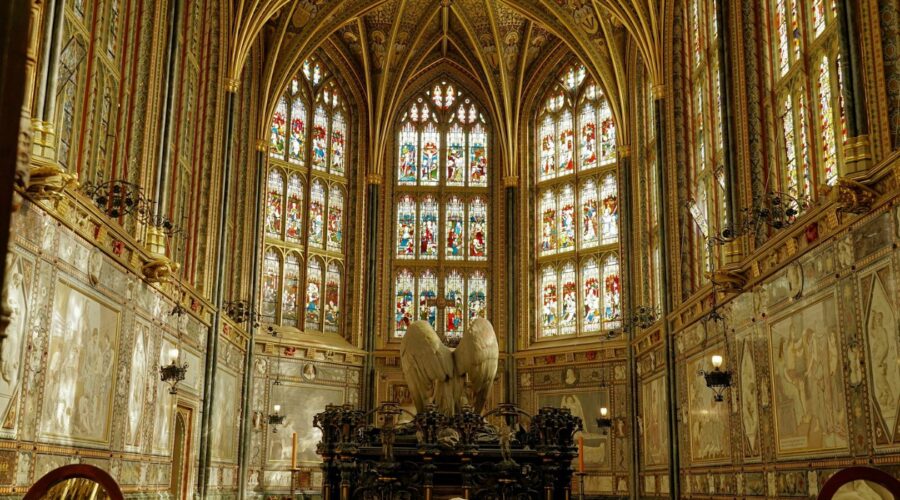
Discover the Rich History and Architectural Splendor of St. Bridget’s Church
A Timeless Landmark of Dublin
Nestled in the bustling heart of Dublin, Ireland, St. Bridget’s Church stands as a testament to centuries of faith, architectural prowess, and unwavering community spirit. With its awe-inspiring facade, intricate stained-glass windows, and captivating history, this iconic landmark beckons visitors and locals alike to immerse themselves in its spiritual and architectural wonders.
A Journey Through Time
- 1094: The original wooden structure is believed to have been built on the site by the Vikings.
- 1200s: The wooden church is replaced by a stone structure, which becomes the nucleus of the present-day church.
- 1542: King Henry VIII dissolves the monasteries, leaving St. Bridget’s in a state of disrepair.
- 1687: The church is restored to its former glory by the Jesuits, who introduce Baroque elements to the interior.
- 1839: The church undergoes a major renovation, adding the stunning classical facade that we see today.
Architectural Masterpiece
St. Bridget’s Church blends architectural styles from different eras, reflecting the rich history of Dublin.
Classical Facade
The imposing facade is a triumph of Greek Revival architecture. Composed of gleaming limestone, it features a grand portico supported by Doric columns, echoing the grandeur of ancient temples.
Baroque Interior
Step inside the church and be captivated by the lavish Baroque interior. Ornate plasterwork adorns the walls and ceiling, while intricate carvings embellish the altars and pulpit. Stained-glass windows bathe the sanctuary in vibrant hues, creating an ethereal atmosphere.
Spiritual Significance
Throughout the centuries, St. Bridget’s Church has been a cornerstone of the local community, playing a vital role in its spiritual life.
Patron Saint
The church is dedicated to St. Bridget of Sweden, a 14th-century mystic and visionary. Her teachings on peace and unity continue to inspire the congregation and visitors alike.
Vibrant Parish
The church is home to a vibrant parish, offering a wide range of services, including daily Mass, baptisms, weddings, and community events. Its active outreach programs extend support to the homeless and marginalized in the city.
Visiting St. Bridget’s Church
Whether you’re seeking spiritual nourishment, architectural inspiration, or simply a glimpse into Dublin’s rich heritage, a visit to St. Bridget’s Church is a must.
Opening Hours
The church is open to the public daily, offering guided tours on request.
Admission
Admission is free, although donations are welcome.
Location
St. Bridget’s Church is located on Bride Street, in the heart of Dublin city center. It is easily accessible by public transport or on foot.
Conclusion
St. Bridget’s Church is a living testament to the enduring power of faith and the transformative beauty of architecture. Its rich history, stunning facades, and unwavering community spirit make it a beloved landmark that continues to inspire and captivate visitors and worshippers alike. Whether you seek a moment of reflection, a glimpse into the past, or simply admire architectural splendor, St. Bridget’s Church stands as an eternal beacon of spiritual and cultural heritage in the vibrant city of Dublin.
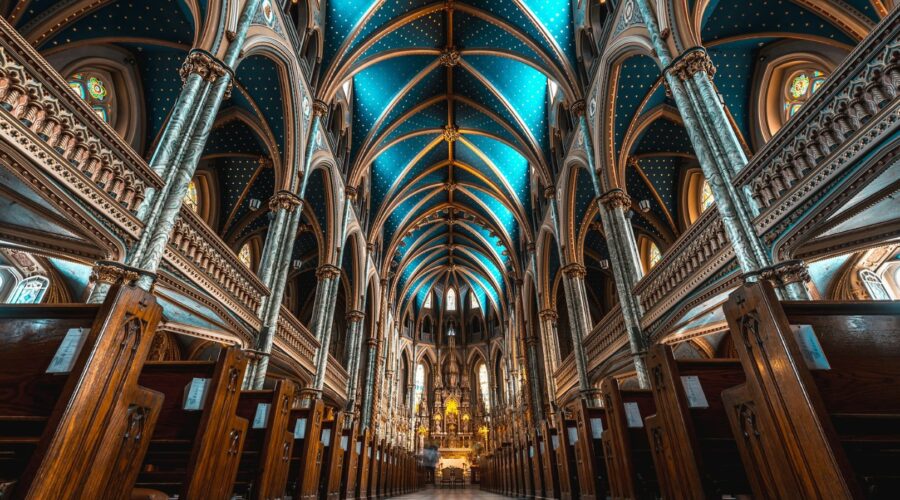
St. Therese Catholic Church: A Beacon of Hope and Devotion
A Historic and Spiritual Landmark
Nestled amidst the vibrant streets of (insert city name), St. Therese Catholic Church stands as a testament to the enduring faith and dedication of its congregation. Founded in (insert year), the church has witnessed countless milestones in the lives of its parishioners, serving as a place of worship, community, and spiritual growth.
Architectural Marvel
The church’s Gothic Revival architecture is a sight to behold, with soaring spires, delicate tracery, and intricate stained-glass windows that bathe the interior in ethereal light. The magnificent altar, adorned with intricate carvings and a towering tabernacle, is a focal point of the sanctuary, inviting contemplation and reverence.
Vibrant Parish Life
Beyond its captivating architecture, St. Therese is a thriving parish community that fosters a sense of belonging and connection. With a diverse congregation of all ages and backgrounds, the church offers a wide range of programs and ministries to meet the spiritual and social needs of its members.
Parish Activities
- Sunday and weekday masses
- Sacramental preparation (baptism, reconciliation, communion, confirmation, marriage)
- Prayer groups and Bible studies
- Choir, music ensemble, and handbell choir
- Youth and adult faith formation programs
- Community service projects
Dedicated Clergy and Staff
St. Therese is blessed with a dedicated team of clergy and staff who are passionate about serving the congregation. The pastor, Reverend (insert priest’s name), provides spiritual guidance and leadership, while the deacons, religious sisters, and lay ministers assist in parish operations and pastoral care.
Community Outreach
Beyond its own walls, St. Therese is committed to serving the wider community. The parish actively participates in outreach programs, providing food and shelter to the homeless, supporting local charities, and advocating for social justice.
Special Events and Celebrations
Throughout the year, St. Therese hosts special events and celebrations that bring the parish community together. These include:
- Parish festivals with food, games, and live music
- Pilgrimages to holy sites
- Annual Christmas and Easter pageants
- Community outreach events
A Legacy of Faith
For over (insert number) years, St. Therese Catholic Church has been an integral part of the local community. Its rich history, beautiful architecture, vibrant parish life, and unwavering commitment to faith have made it a beacon of hope and a source of spiritual nourishment for generations of Catholics.
Getting Involved
Whether you are a lifelong Catholic or seeking a deeper connection with God, St. Therese Catholic Church welcomes you with open arms. To learn more about the parish, visit our website at (insert website address) or contact us at (insert phone number or email address).
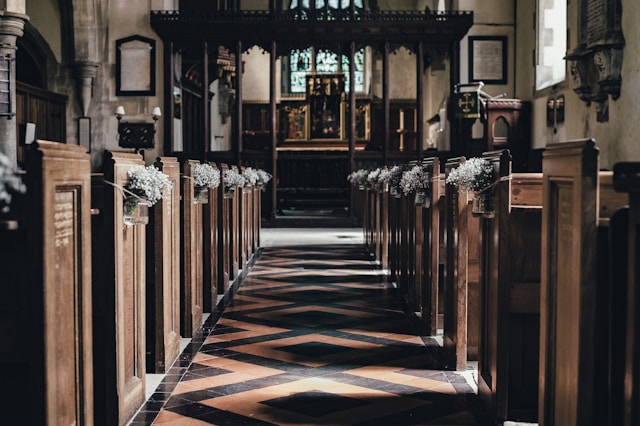
**Dei Verbum: The Word of God in the Life of the Church**
**Introduction**
Dei Verbum (Latin for “Word of God”) is one of the most important documents of the Second Vatican Council (1962-1965). It is a dogmatic constitution that outlines the Catholic Church’s understanding of the Bible and its place in the life of the Church.
**The Nature of the Bible**
Dei Verbum teaches that the Bible is the inspired Word of God. It is not simply a human book, but is God’s own Word, written through the inspiration of the Holy Spirit. The Bible is therefore a unique and authoritative source of divine revelation.
The Bible is not a monolithic text, but rather a collection of different writings that were written over a period of centuries by different authors. These writings include historical accounts, poetry, prophecy, wisdom literature, and letters. Despite their diversity, all of these writings are united by their common theme: God’s revelation of himself to humanity.
**The Interpretation of the Bible**
Dei Verbum emphasizes the importance of using the proper methods for interpreting the Bible. These methods include:
- Historical-critical interpretation: This method seeks to understand the Bible in its historical and literary context.
- Tradition: The Church’s tradition provides an important lens for understanding the Bible.
- Magisterium: The Church’s teaching authority has a role to play in interpreting the Bible.
**Table: The Threefold Test for Biblical Interpretation**
Test Criteria Historicity Is the event described in the Bible historically plausible? Tradition Does the event described in the Bible fit with the Church’s understanding of God and salvation? Magisterium Has the Church officially taught on the event described in the Bible? **The Bible and the Church**
Dei Verbum teaches that the Bible is the Church’s “supreme rule of faith.” It is the source of all Christian doctrine and practice. The Church has a responsibility to safeguard the Bible and to ensure that it is properly interpreted and proclaimed.
The Bible is not only a book for individual piety, but is also a book for the entire Church. It is the Church’s duty to proclaim the Word of God to the world and to live out its teachings in its own life.
**Conclusion**
Dei Verbum is a landmark document that has had a profound impact on the Catholic Church’s understanding of the Bible. It has helped to renew the Church’s appreciation for the Word of God and to foster a more informed and faithful reading of Scripture.
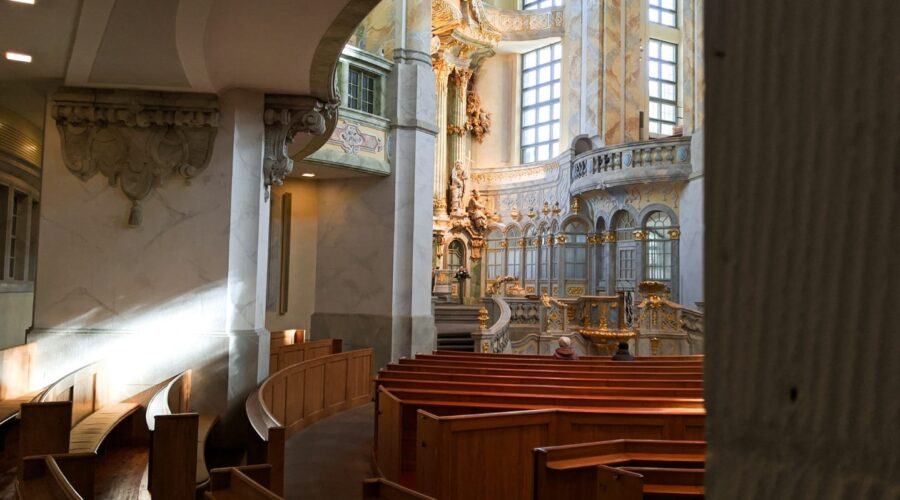
Andy Wood: A Shining Beacon of Faith and Leadership
Andy Wood, the renowned pastor and author, has left an indelible mark on the Christian community. His exceptional leadership, unwavering faith, and deep commitment to serving others have inspired and transformed countless lives. This comprehensive blog post will delve into the key aspects of Andy Wood’s life, ministry, and legacy.
Andy Wood’s Early Life and Ministry
Andrew Graham Wood was born on December 23, 1964, in Tuscaloosa, Alabama. From a young age, he displayed a strong faith and a passion for sharing the Gospel. In 1988, he graduated from Samford University with a degree in business administration. After working briefly in the financial industry, he felt called to ministry.
Wood enrolled at Beeson Divinity School in 1991 and graduated with a Master of Divinity degree in 1994. He served as an associate pastor at First Baptist Church in Trussville, Alabama, for several years before becoming the senior pastor of Echo Lake Baptist Church in Vestavia Hills, Alabama, in 1999.
Echo Lake Baptist Church under Andy Wood’s Leadership
Under Wood’s leadership, Echo Lake Baptist Church experienced remarkable growth and renewal. He implemented innovative programs, such as the “Mosaic” small group ministry and the “Echo” college ministry. He also emphasized the importance of mission work, leading the church to become actively involved in local and international outreach efforts.
Wood’s sermons were known for their biblical depth, practical insights, and infectious enthusiasm. He challenged his congregation to live out their faith in all aspects of their lives and to make a positive impact on their community.
Andy Wood’s Health Journey and Legacy
In 2006, Wood was diagnosed with a rare form of cancer known as synovial sarcoma. He underwent extensive treatment and fought the disease with courage and resilience. Despite his health challenges, he continued to lead Echo Lake Baptist Church and to inspire others through his writing and speaking engagements.
Wood’s battle with cancer became a source of both inspiration and encouragement for many. He shared his journey with raw honesty, offering hope and comfort to those facing adversity. He emphasized the importance of trusting in God, finding joy in the midst of suffering, and leaving a legacy of faith.
In February 2023, Andy Wood passed away peacefully at the age of 58. His legacy as a pastor, author, and beloved husband and father will continue to inspire generations to come.
Key Teachings and Contributions of Andy Wood
- The importance of discipleship: Wood believed that every Christian should be committed to growing in their faith and mentoring others.
- The power of unity: He emphasized the need for Christians to come together in unity to fulfill the Great Commission.
- The joy of serving others: Wood taught that serving others is not a burden but a privilege and a way to glorify God.
- The hope of the Gospel: He proclaimed the transformative power of the Gospel, offering hope and redemption to all who believed.
- The importance of leaving a legacy: Wood encouraged his followers to live lives that would make a lasting impact for Christ.
Andy Wood’s Books and Media
Andy Wood authored several books that have become bestsellers and have been translated into multiple languages. Some of his most notable works include:
Wood also hosted a popular podcast called “The Andy Wood Podcast,” where he shared his insights on faith, leadership, and current events. His sermons and teachings are available online and have been a source of encouragement and inspiration to countless listeners.
Conclusion
Andy Wood was a man of unwavering faith, exceptional leadership, and profound impact. His legacy as a pastor, author, and servant of God will continue to bless and inspire generations to come. His teachings on discipleship, unity, service, hope, and legacy challenge us to live out our faith with passion, purpose, and a spirit of excellence.
May we all strive to follow in Andy Wood’s footsteps, leaving a lasting impact for Christ in our communities and in the world.

Annunciation Catholic Church: A Guide to a Revered Religious Landmark
Annunciation Catholic Church stands as a beacon of faith and devotion, inviting worshippers and visitors alike to immerse themselves in its rich history and spiritual significance.
History and Founding
The origins of Annunciation Catholic Church trace back to 1841 when a small group of Catholics gathered for worship in a rented hall on Franklin Street in Chicago. As the congregation grew, the need for a dedicated church became apparent.
In 1853, Bishop Anthony O’Regan purchased land at 1801 South Blue Island Avenue for the construction of a new church. The cornerstone was laid on July 2, 1854, and the church was completed and dedicated on August 2, 1855.
Over the years, Annunciation Catholic Church has undergone several renovations and expansions to accommodate its growing congregation. The most significant renovation occurred in 1908 when the current church building was built.
Architecture and Design
Annunciation Catholic Church is a classic example of Gothic Revival architecture, characterized by pointed arches, ribbed vaults, and large stained-glass windows. The church’s exterior is constructed of red brick and limestone, while the interior features elaborate carvings and decorative details.
Floor Plan
The church is cruciform in shape, with a nave, transepts, and a chancel. The nave is the main body of the church, where the congregation gathers for worship. The transepts are the arms of the cross, which intersect the nave, and the chancel is the elevated area at the east end of the church, where the altar is located.
Stained-Glass Windows
One of the most striking features of Annunciation Catholic Church is its impressive collection of stained-glass windows. These windows depict scenes from the life of Christ, the Virgin Mary, and other saints.
Parish Life and Activities
Annunciation Catholic Church is a vibrant and active parish with a wide range of programs and activities for its members. These include:
- Masses (daily and weekly)
- Sacramental preparation (Baptism, Confirmation, Marriage)
- Religious education classes
- Youth groups
- Social justice outreach
Historical Significance and Cultural Impact
Annunciation Catholic Church has played a significant role in the history and culture of Chicago. It was one of the first Catholic churches established in the city and has been a center of Catholic life for generations.
The church has also been a witness to many historical events, including the Great Chicago Fire of 1871 and the World’s Columbian Exposition of 1893.
How to Visit
Annunciation Catholic Church is open to the public for Mass and other events. Visitors are welcome to explore the church’s beautiful architecture, admire its stained-glass windows, and learn about its rich history.
Mass Schedule
Click here for the latest Mass schedule.
Location and Directions
Address: 1801 South Blue Island Avenue, Chicago, IL 60608
Directions:
* **By car:** Annunciation Catholic Church is easily accessible by car. There is ample street parking available.
* **By public transportation:** The church is located near the CTA’s 18th Street station on the Blue Line.Accessibility
Annunciation Catholic Church is wheelchair accessible. There is a ramp at the front entrance of the church and an elevator to the second floor.
Contact Information
Phone: (312) 421-5400
Website: www.annunciationchurchchicago.org
Email: [email protected]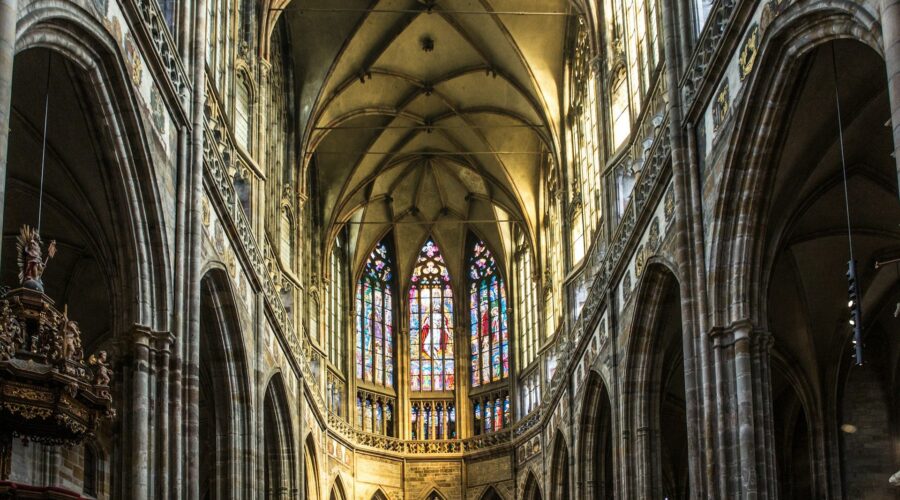
Discover Holy Trinity Lutheran Church: A Beacon of Faith and Community
A Historic Legacy of Spirituality
Holy Trinity Lutheran Church, nestled in the heart of [city name], has been a cornerstone of the community for over a century. Founded in [year], the church has witnessed countless moments of joy, sorrow, and spiritual awakening.
The church’s stunning architecture, featuring traditional Gothic elements, reflects its deep-rooted faith. Its stained-glass windows, depicting biblical scenes, provide a vibrant backdrop for worship and contemplation.
A Vibrant Community of Believers
Holy Trinity is more than just a building; it is a thriving community that values connection and growth. With a welcoming atmosphere, the church embraces individuals from all walks of life.
Worship Services
Weekly worship services are the cornerstone of Holy Trinity’s community life. Led by Pastor [pastor’s name], the services combine traditional liturgy with contemporary music, creating a dynamic and engaging experience.
Sunday School and Youth Programs
Children and youth play a vital role in the church’s community. Sunday School programs offer age-appropriate biblical instruction, while youth groups provide opportunities for fellowship, service, and spiritual growth.
Community Outreach
Holy Trinity extends its reach beyond its walls, actively engaging in community outreach programs. Through partnerships with local organizations, the church supports the needy, provides mentorship opportunities, and promotes interfaith dialogue.
Exploring Spiritual Growth
Holy Trinity offers a range of programs and resources to support spiritual growth and deepening one’s faith:
Bible Study Groups
Small-group Bible study groups meet regularly to delve into Scripture, explore different perspectives, and foster a deeper understanding of God’s word.
Prayer Ministries
The church’s dedicated prayer ministry provides support and encouragement to those in need. Prayer teams are available for confidential prayer requests and offer guidance in navigating challenging times.
Spiritual Retreats
Periodically, Holy Trinity organizes spiritual retreats that provide opportunities for renewal, reflection, and connection with nature and the divine.
Membership and Involvement
Becoming a member of Holy Trinity opens doors to a wealth of opportunities for spiritual growth and community engagement.
Membership Process
The membership process is open to all who affirm the church’s faith statement and desire to actively participate in its community.
Volunteer Opportunities
Members play an integral role in the church’s ministry. Numerous volunteer opportunities are available, ranging from assisting in worship services to mentoring youth or serving in outreach programs.
Leadership Roles
Members with a strong commitment to the church may seek leadership roles, such as serving on the church council or participating in committees that oversee various aspects of the church’s life.
Contact and Location
For further information or to visit Holy Trinity Lutheran Church, please contact us at:
- Address: [church address]
- Phone: [phone number]
- Email: [email address]
- Website: [church website]
Conclusion
Holy Trinity Lutheran Church is a vibrant community of faith, offering a welcoming home to all who seek spiritual growth, connection, and service. Through its historic legacy, vibrant community, and commitment to spiritual development, the church continues to serve as a beacon of hope and inspiration.
Whether you are a lifelong Lutheran, exploring Christianity for the first time, or simply seeking a place where you can connect with others and deepen your faith, Holy Trinity welcomes you with open arms.

St. Timothy: A Disciple of Paul, Faithful Servant of the Lord
Introduction
St. Timothy was a devoted disciple of the Apostle Paul and a faithful servant of the Lord. He played a vital role in the early Christian church, becoming the first bishop of Ephesus. His life and teachings provide valuable insights into the character, mission, and challenges faced by the early Christian community.
Early Life and Conversion
Birth and Family
Timothy was born in Lystra, a city in the Roman province of Galatia (modern-day Turkey), around 17 A.D. His mother, Eunice, was a devout Jewess, and his father was a Greek Gentile. This mixed parentage placed Timothy in a unique position, as he was familiar with both Jewish and Greek culture.
Conversion and Discipleship
When Paul visited Lystra on his second missionary journey around 47 A.D., Timothy was drawn to his teachings and was converted to Christianity. He became a close companion of Paul, traveling with him on his subsequent missionary journeys and serving as his personal assistant.
Missionary Endeavors
Discipleship under Paul
Timothy accompanied Paul on his second and third missionary journeys, during which he witnessed the growth and persecution of the early Christian church. He proved to be a capable and trustworthy helper, supporting Paul in his ministry.
Bishop of Ephesus
Around 64 A.D., Paul appointed Timothy as the first bishop of Ephesus, a major city in the Roman province of Asia. Timothy’s role included supervising the church, teaching sound doctrine, and ordaining elders.
Pastoral Letters
Paul wrote two letters to Timothy (1 and 2 Timothy), along with one to Titus, which are known as the Pastoral Letters. These letters contain valuable instructions on church leadership, pastoral responsibilities, and Christian conduct.
Teachings and Legacy
Character and Virtues
Timothy was known for his exceptional character and virtues. He was described as “a man of God” (1 Timothy 6:11), “full of faith and the Holy Spirit” (Acts 6:3), and “without fault” (1 Timothy 3:2). His life exemplified the Christian virtues of faith, love, purity, and self-control.
Preservation of Truth
Timothy played a crucial role in preserving the truth of the Christian faith during a time of doctrinal controversies. He stood firm against false teachings and defended the apostolic tradition.
Training and Ordination of Leaders
Timothy was responsible for training and ordaining leaders in the early church. He provided guidance and support to younger ministers, ensuring the continuity of sound doctrine and leadership.
Death and Veneration
Martyrdom
The circumstances surrounding Timothy’s death are uncertain, but tradition holds that he was martyred in Ephesus around 97 A.D. According to legend, he was stoned to death while trying to stop a pagan festival.
Veneration
Timothy is venerated as a saint in both the Catholic and Eastern Orthodox churches. His feast day is celebrated on January 24 in the Western tradition and on January 22 in the Eastern tradition.
Conclusion
St. Timothy’s life and legacy serve as a reminder of the challenges, sacrifices, and faithfulness required for spreading the Christian faith. He was a devoted disciple of Paul, a faithful bishop, and a valiant defender of truth. His example continues to inspire Christians to live lives of service, integrity, and unwavering faith.

The LDS Handbook: A Comprehensive Guide for Members
Introduction
The LDS Handbook is a comprehensive resource for members of The Church of Jesus Christ of Latter-day Saints (LDS Church). It provides guidance on a wide range of topics, including beliefs, doctrine, practices, and organization. The handbook is intended to be a living document that is updated as needed to reflect changes in the church’s policies and procedures.
Sections of the LDS Handbook
The LDS Handbook is divided into several sections, each of which covers a different aspect of the church’s organization and doctrine.
- Section 1: General Principles – This section provides an overview of the church’s beliefs and doctrines. It also includes information on the church’s governance and organization.
- Section 2: Priesthood and Auxiliaries – This section covers the roles and responsibilities of the priesthood and auxiliary organizations in the church. It includes information on how these organizations are structured and how they function.
- Section 3: Ordinances and Covenants – This section provides an overview of the church’s ordinances and covenants. It includes information on the purpose and meaning of each ordinance, as well as instructions on how to perform them.
- Section 4: Church Programs – This section provides information on the church’s various programs, including youth programs, missionary work, and temple work. It also includes information on how to participate in these programs.
- Section 5: Church Policies and Procedures – This section provides information on the church’s policies and procedures. It includes information on a wide range of topics, including financial matters, health, and education.
How to Use the LDS Handbook
The LDS Handbook is a valuable resource for members of the LDS Church. It can be used to learn about the church’s beliefs, doctrines, and practices. It can also be used to find information on specific topics, such as church policies and procedures.
To use the LDS Handbook, simply navigate to the section that you are interested in. Each section is divided into chapters, which are further divided into sub-chapters. The sub-chapters contain the specific information that you are looking for.
Tips for Using the LDS Handbook
Here are a few tips for using the LDS Handbook effectively:
- Use the index. The LDS Handbook has a comprehensive index that can help you find the information you are looking for quickly and easily.
- Read the handbook regularly. The LDS Handbook is a living document that is updated as needed. It is important to read the handbook regularly to stay up-to-date on the church’s policies and procedures.
- Use the handbook as a resource. The LDS Handbook is a valuable resource for members of the LDS Church. It can be used to learn about the church’s beliefs, doctrines, practices, and policies. It can also be used to find information on specific topics, such as how to perform ordinances or how to participate in church programs.
Conclusion
The LDS Handbook is a comprehensive resource for members of the LDS Church. It provides guidance on a wide range of topics, including beliefs, doctrine, practices, and organization. The handbook is a valuable tool that can be used to learn about the church and to stay up-to-date on its policies and procedures.

Bill Hybels: A Comprehensive Guide to His Life, Ministry, and Legacy
Introduction
Bill Hybels is a well-known Christian pastor, author, and speaker. He is the founding pastor of Willow Creek Community Church, one of the largest and most influential churches in the United States. Hybels has been a leader in the Evangelical movement for over 40 years, and his teachings have reached millions of people around the world.
Early Life and Ministry
William Hybels was born in Kalamazoo, Michigan, on December 11, 1951. He grew up in a Christian home and attended Calvin College and Western Theological Seminary. After graduating from seminary, Hybels served as an associate pastor at First Baptist Church in Palatine, Illinois.
In 1975, Hybels left First Baptist Church to start Willow Creek Community Church. Willow Creek began as a small group of families meeting in a rented space. However, the church quickly grew, and by the 1990s, Willow Creek was one of the largest churches in the United States.
Teaching and Leadership
Hybels is known for his practical and down-to-earth teaching style. He often speaks on topics such as marriage, family, and personal growth. Hybels has also written several books, including “Too Busy Not to Pray” and “Becoming a Contagious Christian.”
In addition to his teaching ministry, Hybels has also been a leader in the Evangelical movement. He is a founding member of the Willow Creek Association, a network of churches that share a similar vision for ministry. Hybels has also served on the board of directors of the National Association of Evangelicals.
Controversies and Criticism
Hybels has not been without his critics. In 2018, several women accused Hybels of inappropriate behavior, including sexual harassment and assault. Hybels denied the allegations, but he resigned as pastor of Willow Creek Community Church in 2019.
The allegations against Hybels have raised important questions about the role of power and accountability in the church. Hybels has apologized for any pain or harm he caused, but he has not admitted to any wrongdoing.
Legacy
Despite the controversies surrounding his later years, Hybels is still considered one of the most influential Christian leaders of our time. His teachings have reached millions of people around the world, and he has helped to shape the Evangelical movement in significant ways.
Timeline of Bill Hybels’ Life and Ministry
* 1951: Born in Kalamazoo, Michigan
* 1975: Starts Willow Creek Community Church
* 1990s: Willow Creek becomes one of the largest churches in the United States
* 2006: Publishes “Too Busy Not to Pray”
* 2009: Publishes “Becoming a Contagious Christian”
* 2018: Accused of inappropriate behavior by several women
* 2019: Resigns as pastor of Willow Creek Community ChurchAdditional Resources
* Willow Creek Community Church website: https://www.willowcreek.org/
* Bill Hybels’ website: https://billhybels.com/
* Christianity Today article on the allegations against Hybels: https://www.christianitytoday.com/news/2018/august/bill-hybels-willow-creek-sexual-harassment-allegations.html
* Relevant Magazine article on Hybels’ legacy: https://relevantmagazine.com/faith/faith-leaders/bill-hybels-legacy-willow-creek/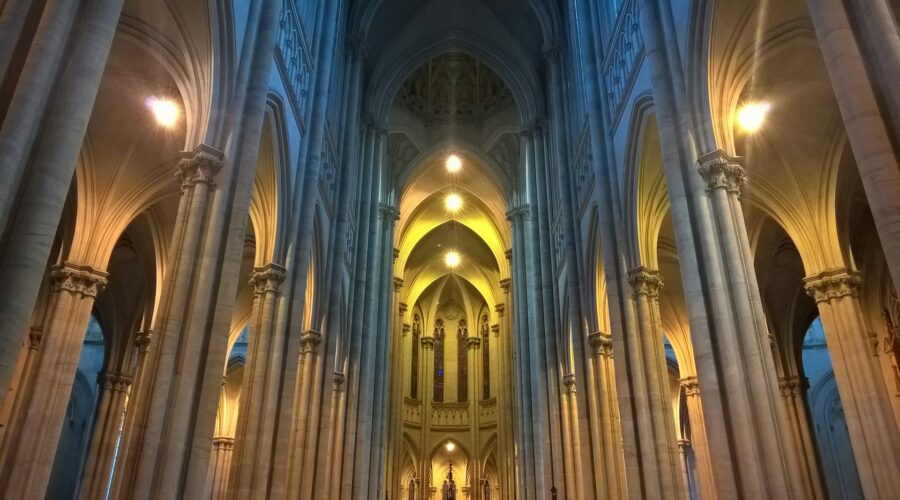
Charles Haddon Spurgeon: The Prince of Preachers
Introduction
Charles Haddon Spurgeon (1834-1892) was a renowned British preacher and pastor who is considered one of the greatest preachers of all time. Known for his eloquence, wit, and evangelical zeal, Spurgeon’s ministry had a profound impact on the world, leaving a lasting legacy that continues to inspire Christians today.
Early Life and Call to Preaching
Spurgeon was born on June 19, 1834, in Kelvedon, Essex, England. Raised in a devout Baptist family, he experienced a profound conversion at the age of 15. Soon after, he felt a strong call to preach the gospel.
First Pastorate and Growing Popularity
In 1854, Spurgeon became the pastor of Waterbeach Baptist Chapel in Cambridgeshire. His dynamic preaching quickly drew large crowds, and within a year, he was invited to become the pastor of Park Street Baptist Church in London.
In London, Spurgeon’s ministry exploded. Park Street Baptist Church became packed to capacity with people eager to hear his sermons. Spurgeon’s reputation as a gifted preacher spread throughout the city and beyond.
Metropolitan Tabernacle and Evangelistic Outreach
In 1861, Spurgeon moved into a new building, the Metropolitan Tabernacle, which could accommodate up to 5,000 people. He became known for his frequent evangelistic campaigns, both in London and across the country.
Doctrinal Beliefs
Spurgeon was a staunch Calvinist and believed strongly in the doctrines of salvation by grace alone, the sovereignty of God, and the perseverance of the saints. He was also a strong advocate for the local church and the autonomy of the congregation.
Sermons and Publications
Spurgeon preached over 3,500 sermons during his lifetime. His sermons were renowned for their clarity, humor, and practical application. He also published numerous devotional books, commentaries, and tracts.
- The Treasury of David: A Commentary on the Psalms
- Morning and Evening: Daily Readings
- John Ploughman’s Talk: Plain Advice for Plain People
Spurgeon’s College and Other Work
In 1856, Spurgeon founded Spurgeon’s College, a theological school for training Baptist pastors. He also established the Stockwell Orphanage and almshouses for the care of the poor and the elderly.
Legacy and Influence
Spurgeon’s ministry had a profound impact on the Christian world. He was instrumental in the growth of the Baptist denomination and the revival of evangelicalism in the 19th century.
Preaching Style and Eloquence
Spurgeon’s preaching style was characterized by his powerful voice, dramatic gestures, and vivid illustrations. He was known for his ability to convey complex theological truths in a way that was both accessible and engaging.
Compassion and Social Concern
Spurgeon was not only a great preacher but also a compassionate minister. He was deeply concerned with the social issues of his day, such as poverty and injustice. He established numerous charities and spoke out against social evils.
Influence on Preachers and Leaders
Spurgeon’s influence on preachers and Christian leaders has been immense. His sermons and writings continue to be studied and admired by pastors, theologians, and lay Christians.
Conclusion
Charles Haddon Spurgeon was a true giant of the Christian faith. His passion for preaching the gospel, his unwavering commitment to biblical truth, and his compassion for the lost and needy left an enduring mark on the world. Today, Spurgeon’s legacy continues to inspire and encourage Christians around the globe, reminding us of the power of the gospel and the importance of living out our faith in love and service.
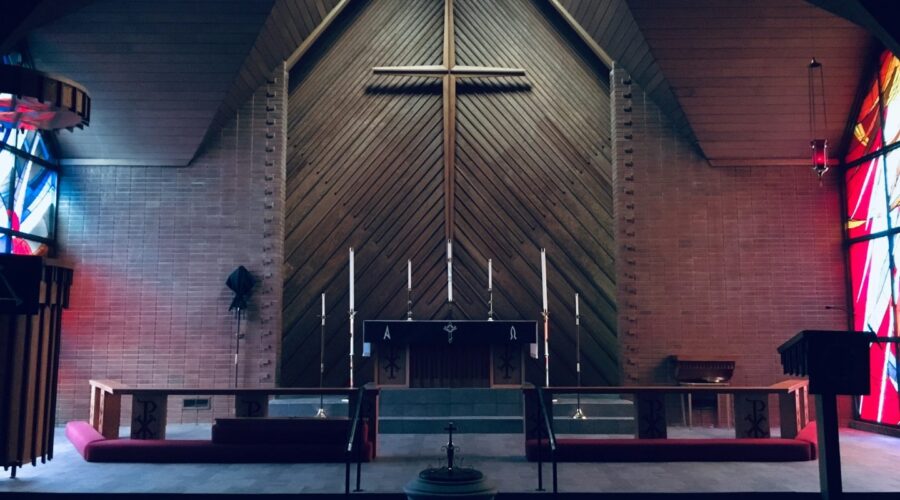
Discover the History, Beliefs, and Practices of the Ukrainian Orthodox Church
Introduction
The Ukrainian Orthodox Church is a self-governing Eastern Orthodox Church with a rich history, diverse beliefs, and unique practices. This article provides a comprehensive guide to the Ukrainian Orthodox Church, exploring its origins, beliefs, liturgical traditions, and cultural significance.
Origins and History
The Ukrainian Orthodox Church traces its roots back to the baptism of Kievan Rus’ by Saint Vladimir the Great in 988. Over the centuries, the Church has faced various challenges, including foreign occupations, political upheavals, and religious persecutions.
- 988: Baptism of Kievan Rus’ by Saint Vladimir the Great
- 13th-14th century: Mongol invasion and occupation
- 16th-17th century: Polish-Lithuanian Commonwealth and Uniate movement
- 18th-19th century: Russian Empire and suppression of Ukrainian Church
Beliefs and Teachings
The Ukrainian Orthodox Church adheres to the doctrines of Eastern Orthodox Christianity, which emphasizes:
Holy Trinity
Belief in the Holy Trinity: God the Father, God the Son (Jesus Christ), and God the Holy Spirit.
Incarnation and Salvation
Belief in Jesus Christ as the Son of God who became human to redeem humanity from sin.
Resurrection and Ascension
Belief in the resurrection of Jesus Christ from the dead and his ascension into heaven.
Liturgical Traditions and Practices
The Ukrainian Orthodox Church follows a rich liturgical tradition that has evolved over centuries.
Divine Liturgy
The Divine Liturgy is the central service of the Church, which includes prayers, hymns, and the Eucharist.
Fasting and Prayer
The Church observes four major fasting periods throughout the year, accompanied by prayer and spiritual disciplines.
Icons and Veneration
Icons are highly revered in the Ukrainian Orthodox Church, as they are believed to represent the presence of Christ, saints, and angels.
Cultural Significance
The Ukrainian Orthodox Church has played a vital role in shaping Ukrainian history, culture, and identity.
Historical Preservation
The Church has preserved many ancient manuscripts, icons, and architectural monuments of Ukrainian cultural heritage.
Language and Education
The Church has promoted the Ukrainian language and established schools and seminaries to educate the clergy and laity.
National Unity
The Church has served as a unifying force for Ukrainians, fostering a sense of national identity and belonging.
Current Challenges and Future Prospects
The Ukrainian Orthodox Church is currently facing several challenges, including:
- Political and religious divisions within Ukraine
- Relations with the Russian Orthodox Church
- Modernization and adapting to contemporary society
Despite these challenges, the Church remains committed to its mission of spreading the Gospel, preserving Ukrainian culture, and serving the Ukrainian community.
Conclusion
The Ukrainian Orthodox Church is a vibrant and resilient faith community that has played a significant role in Ukrainian history. Through its beliefs, practices, and cultural influence, the Church continues to inspire and nourish the Ukrainian people. Understanding the Ukrainian Orthodox Church provides a valuable insight into the religious, cultural, and historical tapestry of Ukraine.